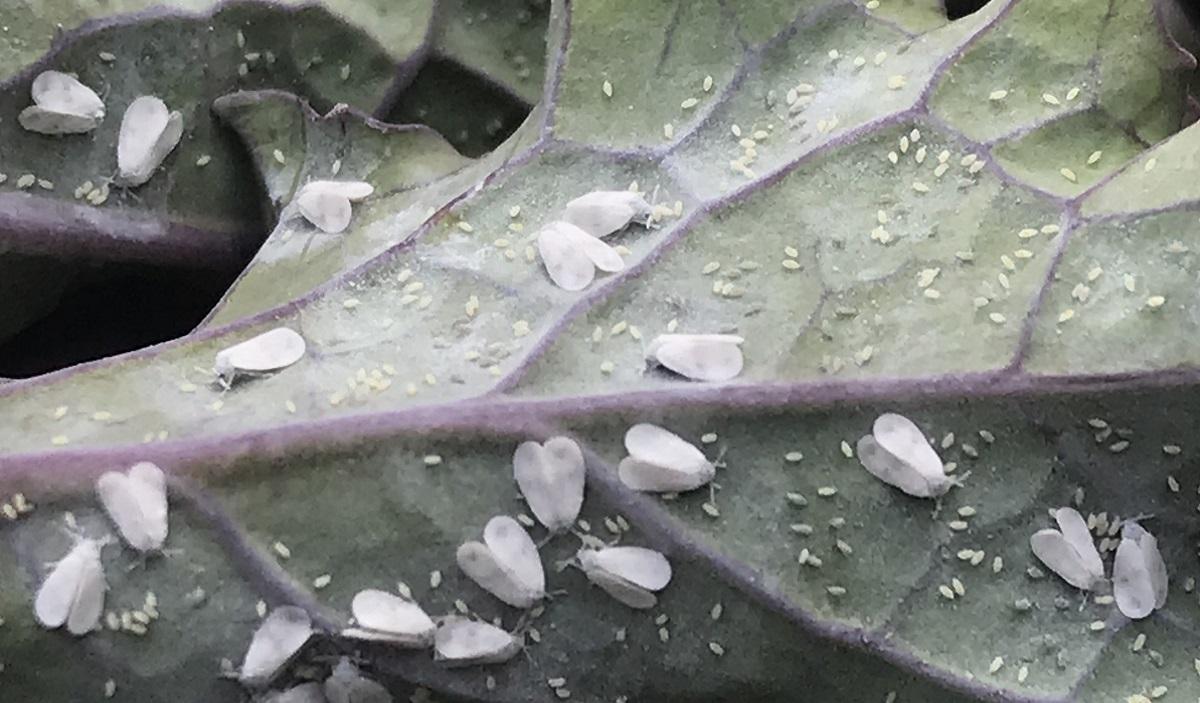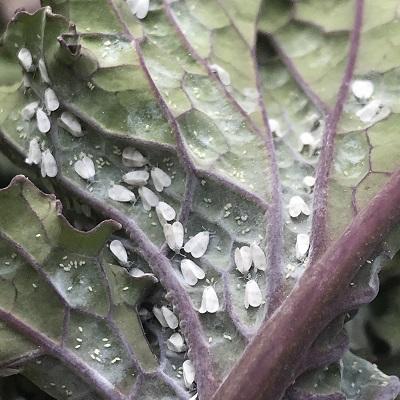Appearance
- Eggs: Tiny, oval, suspended by short stalks on leaf underside, usually about 15 in a characteristic semi-circular pattern. Initially greenish-white, and then turning dark as mature.
- Nymphs: Tiny, pale green to almost transparent, flattened oval-shaped discs which may or may not have a waxy white covering. There are 4 instars.
- Pupae: Is the late 4th instar, which ceases feeding, is thicker and more opaque, and has long waxy filaments around the edge of body.
- Adults: Resemble tiny white moths with powdery wings, about 1/10th inch in length, triangular in shape when viewed from above because the wings widen from head to tail.




